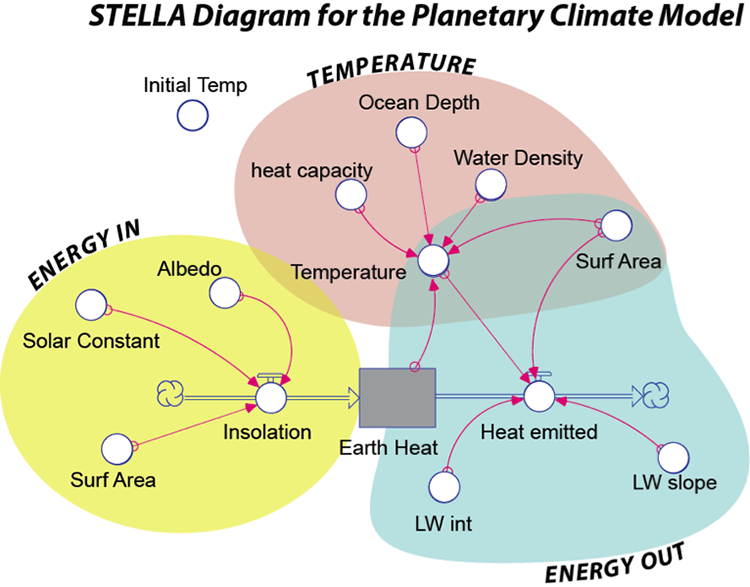Introduction to a Simple Planetary Climate Model
Our first climate model calculates how much energy is received and emitted (given off) by our planet, and how the average temperature relates to the amount of thermal energy stored. The complete model is shown below, with three different sectors of the model highlighted in color:

First, let’s define a few terms that you might not be familiar with.
Insolation —stands for Incoming Solar Radiation, which is a fancy way of saying sunlight or solar energy.
Albedo — the fraction of light reflected from some material; 0 would be a perfectly black object (no reflected light) and 1 would be a perfectly white object (no light absorbed).
Heat capacity — this is the amount of energy (units are Joules) needed to raise 1 kilogram of some material 1°C.
Ocean Depth — this is the depth of the part of the ocean that is involved in climate over short time scales of decades, the part of the ocean exchanges energy with the atmosphere. While the whole ocean has an average depth of ~4000 m, the part we worry about here has a depth of less than 500 m.
LW Int and LW slope — these are parameters used to describe the relationship between the average planetary temperature and the amount of long-wavelength (infrared, or thermal) energy emitted by the planet; more details are provided below.
